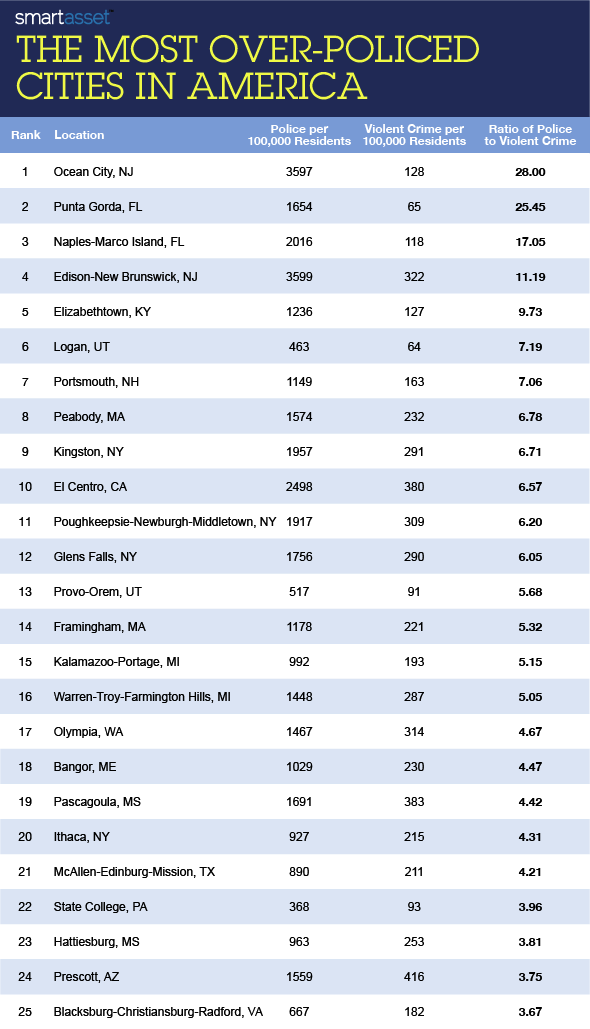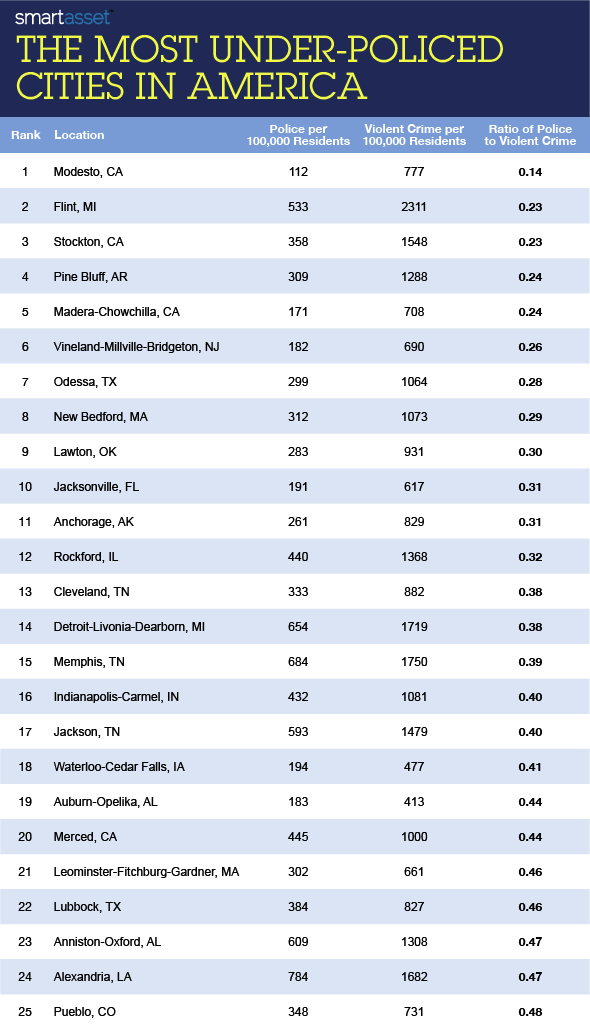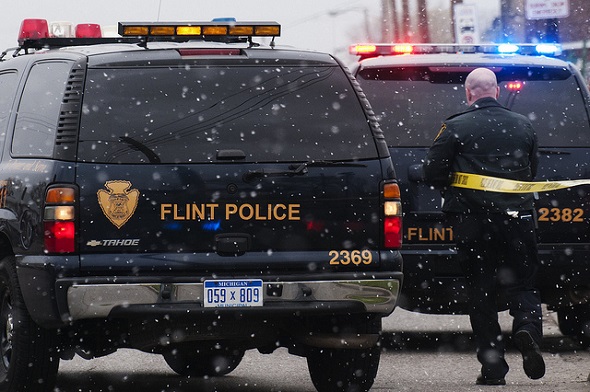In the United States, the responsibility of building and maintaining a police force rests largely with local governments. With the exception of national outfits like the FBI or the DEA, whose jurisdiction is limited to specific types of crime, as well as the state police departments, which are mostly restricted to crimes occurring on state highways, nearly all of the law enforcement officers in this country are part of a city or county department. For that reason, there are no national standards for the number of officers needed to police a given population.
Find out now: How much life insurance do I need?
For very different reasons, crime in the United States varies widely from one city to the next. Even within very small geographic areas, there can be vast differences in the violent and property crime rates. While some areas have less than 100 violent crimes annually for every 100,000 residents, others see more than 20 times that number.
In light of these two facts—varying crime rates and disparities in the sizes of police forces—the number of police in a city can bear little relationship to the crime-level. Some cities are seriously undermanned, with too few officers responding to a high volume of crime, while other cities have the opposite problem. With this in mind, we analyzed data on crime and police employees to find the most over-policed and under-policed cities in America.
Methodology
Using data from the Bureau of Labor Statistics Occupational Employment Survey, we calculated the number of patrol officers, detectives and first-line supervisors (which in many forces are called Sergeants) per 100,000 residents in metropolitan areas throughout the United States.1 We then aggregated FBI data for annual violent crimes per 100,000 residents for the major cities in these same metropolitan areas. Finally, we divided the number of police per 100,000 by the number of annual violent crimes per 100,000 to produce a ratio: the number of police officers per annual violent crime.
Thinking about buying a home? Compare mortgages here.
The average for the metropolitan areas in our study was about 1.3 police officers for every violent crime committed. However, that number varied significantly from city to city, with some areas having over 20 police officers per violent crime, and others having less than one police officer for every five violent crimes. First, here are the cities where the ratio was far higher than average—the most over-policed cities in America.
Findings

At the top of the list, and by a wide margin, is Ocean City, New Jersey. Ocean City is unusual in a number of ways. For starters, it is an unabashed resort town—its motto is “America’s Greatest Family Resort”—which means that for six or so months a year, when the weather is bad and the beaches empty, large parts of the town are uninhabited. In July, however, when the vacationers come in droves, the population balloons to several times the number of permanent residents. The same may be true of the numbers two and three most over-policed cities, Punta Gorda and Naples, Florida—both are coastal communities.
The other way in which Ocean City is unusual is that alcohol sales (but not consumption) are prohibited within its limits. It is not alone in this regard: Elizabethtown, Kentucky, the number nine most over-policed metro in our study, is part of a “moist” county, where alcohol sales are restricted.
Along with beach-towns and dry communities, we also see a large number of college towns in this list: Logan, Utah; Provo, Utah; Kalamazoo, Michigan; Olympia, Washington; Ithaca, New York; State College, Pennsylvania; Hattiesburg, Mississippi; and Blacksburg, Virginia, are all home to at least one major college or university. Like coastal cities, these towns have a fluctuating population.
At the opposite end of the spectrum are the most under-policed cities. These are the areas where the amount of violent crime far outweighs the number of police.

Among the top 25 most under-policed cities are several familiar names. Flint, Stockton, Pine Bluff, Rockford, Detroit, Memphis—these cities have violent crime rates several times the national average.
Flint and Stockton have both faced significant budget cuts in recent years, with the city of Stockton declaring bankruptcy in 2012, at the time the largest municipal bankruptcy in U.S. history. (It was surpassed in 2013 by Detroit, 14th on this list.)
Many of the other cities on the list, however, do not have such issues. Take, for example, Modesto, California, the most under-policed city in our study. While its violent crime rate of 777 per 100,000 residents is over twice the national average, it does not even rank among the top 50 most violent cities in America. Yet it maintains a police force far smaller than many towns of comparable size. Other areas with relatively moderate violent crime rates but very low police numbers include Madera-Chowchilla, California; Waterloo-Cedar Falls, Iowa; and Auburn-Opelika, Alabama.
Photo Credit: flickr
1. Data on the number of police officers in each region are based on a national survey of households, conducted by the BLS. There is, therefore, some inherent variance in the results. In instances where the survey results appeared to be unreliable, we replaced survey data with departmental officer counts. This was for about 5 of the 357 cities we considered.
